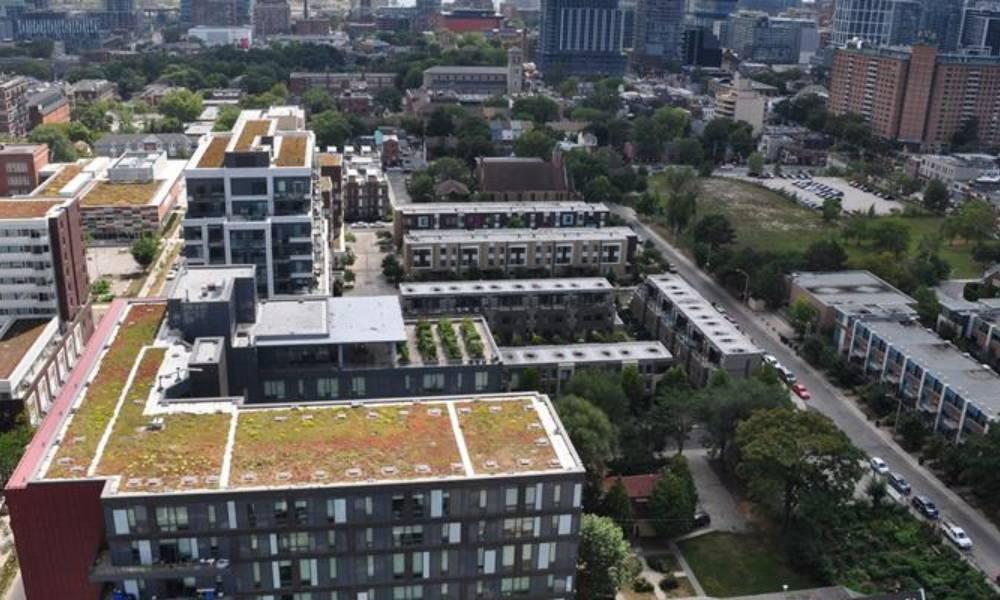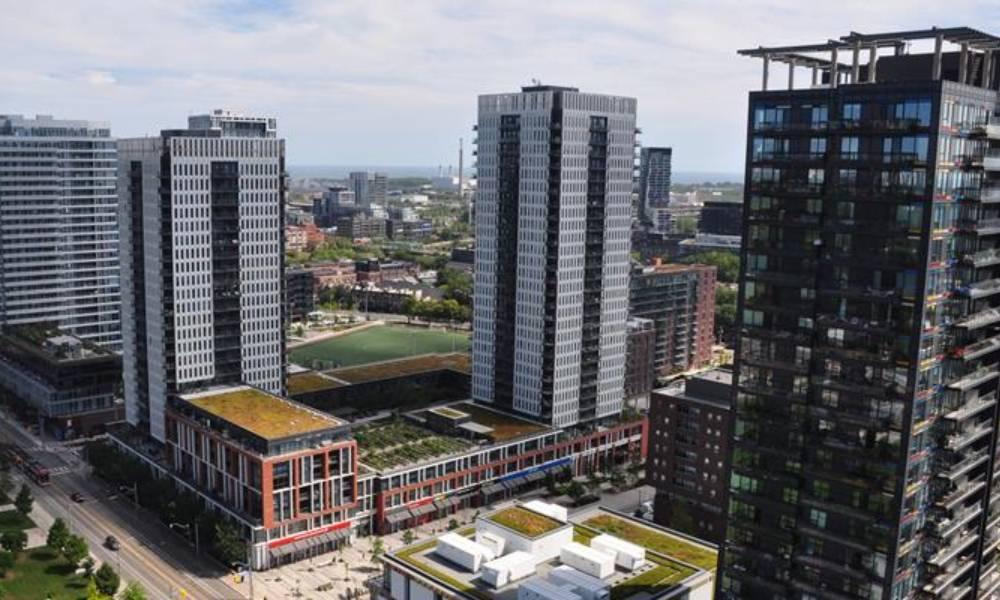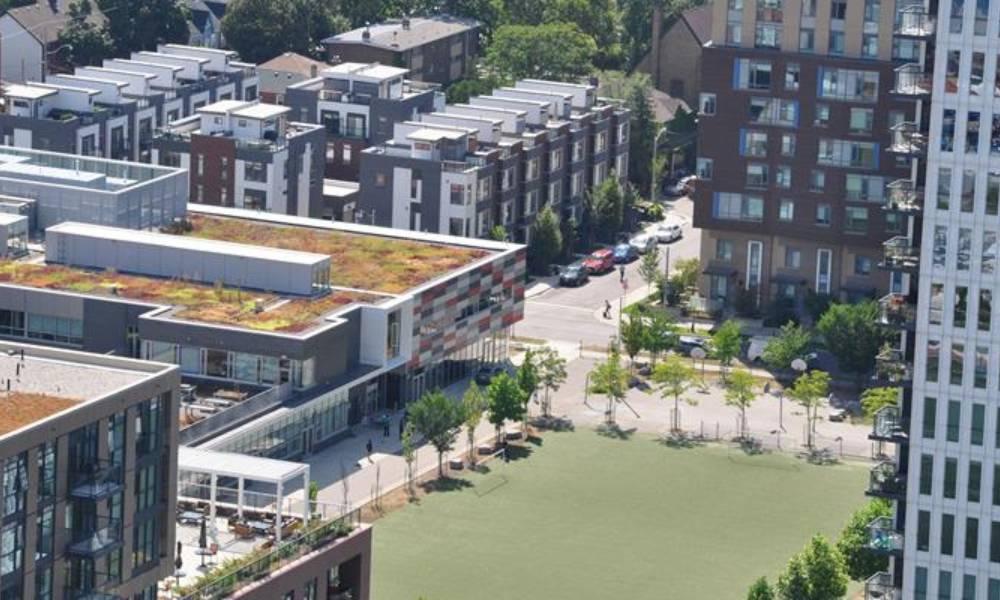The time for Canadian corporations to take action on climate change was yesterday
The strategic partnership between Toronto Community Housing Corporation and Enbridge Gas offers a model for reducing emissions today and achieving a greener tomorrow.
Toronto Community Housing and Enbridge Gas share a commitment to becoming greener in their day-to-day business operations, while supporting Ontario’s overall goal of achieving net-zero by 2050. TCHC has committed to meet the CMHC goal of a 25-per-cent reduction in carbon emissions by 2028. The City of Toronto is aiming to achieve net-zero emissions by 2040 and Enbridge Gas has set a target to reduce emissions intensity by 2030.

Aerial view of the green roof on 525 Dundas St. East building
Through Enbridge Gas’s Affordable Housing Multi-Residential Program, TCHC—Canada’s largest social housing provider—has been able to advance our national collective goal of climate action in different, but mutually beneficial ways. It’s a partnership that can and should be mirrored by other Canadian companies in the name of better business and better environmental stewardship.
The program provides incentives that encourage and support TCHC to address ongoing energy efficiencies across its housing portfolio by offsetting costs associated with the improvements. In 2021, Enbridge provided TCHC with more than $1 million in incentives, which in turn supported TCHC to implement energy efficiency upgrades to its buildings.

Aerial view of green roofs on Daniels Spectrum (lower right) and 77 Regent Park Blvd. (lower left).
For the past 10 years, Enbridge and TCHC have partnered to successfully implement these energy strategies. The partnership has led to lower gas costs for the housing corporation, less natural gas used overall and a significant reduction in annual emissions.
In 2021 alone, incentives made available through the Enbridge program enabled TCHC to complete 26 projects in the midst of a global pandemic when more people were staying home, adding pressure on the utility. Annually, these improvements will save TCHC more than 1.7 million metres cubed of natural gas, a greenhouse gas reduction of 3,225 metric tonnes of CO2. That’s equivalent to taking 556 cars off the road for one year. Additionally, the cost-savings help TCHC to sustain the momentum of its multi-year building capital renewal program, which delivered annual investments of $350 million in 2020 and 2021 for capital repairs that improve living conditions, safety and comfort for tens of thousands of tenants.
It has installed modern energy-efficient heating and cooling systems that will reduce TCHC’s utility costs and, subsequently, its carbon footprint. These upgrades include a combination of measures to improve or replace boilers, ventilation systems and building controls.

Aerial view of a soccer field and buildings with green roofs on Sackville St.
These housing best practices and approaches can be applied to corporate offices and commercial building portfolios across the country. We challenge other businesses, both residential and commercial, to take our lead and apply these same energy-saving technologies. Making your city, region and province more energy-efficient will improve living and working conditions for your stakeholders and, beyond them, your community.
There is no limit to how businesses can apply energy-saving technologies by working in partnership with energy experts for the greater good. We call on Canada’s business leaders to reach out to each other, create connections and make use of the incentives available to you.
By working together, doing what we can, when we can, at every level and from every angle, Ontarians will—without a doubt—meet our collective goal of a greener future.
